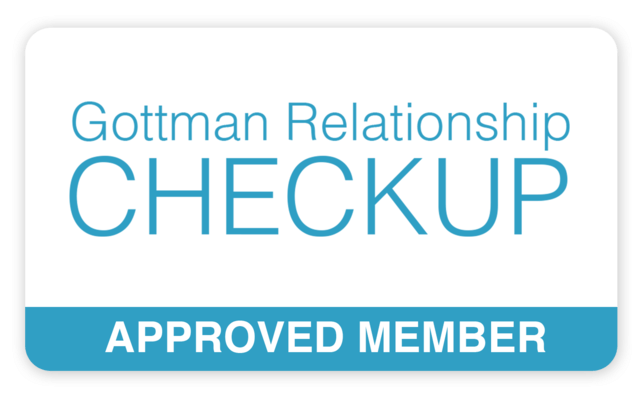
Do you want to handle stress better? Improve communication in your relationships? Understand and manage your own emotional struggles more effectively? Stop the downward spiral of negative thinking?
All of these things ARE POSSIBLE!
When you think of fitness, you may automatically think of physical fitness. But did you know that there is something called emotional fitness? And it is just as important, if not more crucial than physical fitness.
What is EMOTIONAL FITNESS?
Emotional fitness is the ability for the mind to successfully process through difficult emotions so that it can focus on constructive tasks.
Emotional fitness is something you can acquire through learning and practice. Just like your body, your mind needs regular training to stay emotionally fit and healthy.
According to American Psychological Association, an EMOTION is “a complex reaction pattern, involving experiential, behavioral, and physiological elements, by which an individual attempts to deal with a personally significant matter or event.”
Simply put, emotions are conscious mental reactions to your experiences. Your experiences highly control your thoughts and feelings which control your emotions. Your emotions are a result of how you think about something that happens in your life.
Think of this example- You hear a loud noise outside in the middle of the night. You immediately think someone is breaking into your home, so you become fearful. Then a decision is made to behave in a certain manner based on your emotions. You might scream, call 911 or frantically wake up your spouse. Even after the noise is found to be a racoon tipping over the trash can, you cannot sleep because your mind is racing with fearful thoughts of possible future break-ins. In an effort to help, your spouse tells you to relax because there is nothing to worry about and an argument ensues.
You can see how an experience leads to a thought, which leads to an emotion, which impacts the way we respond to the event. In this scenario, the loud noise led to a negative thought, which led to feelings of fear, which spiraled into a negative response.
Being emotionally fit can help prevent negative behavioral responses!
Dr. Nick D. Wignall, clinical psychologist, has identified the following 3 ways you can exercise emotional fitness:
PRACTICE MINDFULNESS
The Mayo Clinic describes mindfulness as the ability to focus on being aware of what you are sensing and feeling in the moment without thinking of interpretation or judgment. It is a way of attending to something by choosing to consciously focus on it.
In the scenario above, the decision was made to focus on the possibility of future break-ins which led to fear and anxiety and ultimately negative behavior. You can learn to control what you choose to attend your mind to and what to disengage from by strengthening your ability to shift your attention from negative to positive stimuli.
- First, practice DAILY MINDFULNESS by spending directed time each day to practice focusing on one thing. Start with 5 minutes at a time and quickly increase to 20 minutes. Choose the same time each day and keep a log to mark your progress. To start, close your eyes and focus on your breathing. Be aware of how it feels without thinking about anything else. When you notice your thinking start to shift, go back to focusing on the sensations of your breathing. You may notice you can only do this for a matter of seconds at first, but it will improve with practice.
- Move to ORDINARY MINDFULNESS by applying your daily mindfulness to your everyday world. The goal is the same- focus on the sensation of things rather than your thoughts about them. Practice with routine events in life, such as showering or eating. Pay attention to the warmth of the water or the taste of the food. Next practice with conversation. Focus only on the words that are being said, not on your thoughts about them.
ELIMINATE NEGATIVE THINKING
Things or people don’t make you feel the way you do, it’s the way you think about those events that causes your emotional reaction. Usually, you give meaning to an experience based upon a story behind it and this is what you relate your thoughts and feelings to.
Imagine you are ready for a date with your spouse and as you walk downstairs he says, “Are you going to wear that?” Immediately you are angry, frustrated and insecure. You respond sarcastically, “If you don’t like it then maybe I won’t even go to dinner with you!” It’s not the question itself that caused your emotions and reaction. It’s the story behind it. Maybe you’ve been trying to get in shape but whatever you tried on made you feel overweight, so you interpreted your spouse’s question with that thought in mind.
If you can change how you think, it will change the way you feel which changes the way you react.
Through COGNITIVE RESTRUCTURING you can learn how to reframe the way you think about things to decrease your negative self-talk. Practice these exercises:
1. Pay attention to and be aware of negative statements when others speak as a way to become familiar with what negative self-talk looks like.
2. Identify negative self-talk within your own speech.
3. Change the manner in which you talk to yourself. For example, use a gentle tone instead of a harsh one, be compassionate instead of judgmental and be straightforward instead of sarcastic.
4. Self-evaluate instead of self-criticize. It is important to identify your mistakes and see them without exaggeration. Take time to reflect on your weaknesses and be intentional about learning from them.
ACCEPT YOUR EMOTIONS
Your emotions are not bad just because they may feel bad. They are not something to be feared, ashamed of or rejected. Emotions are useful to teach, heal, and grow. The goal is not to eliminate your emotions, but to understand and move through them by practicing these strategies:
1. Learn to label your emotions accurately and clearly. Identify specifically how you are feeling. Instead of just bad, are you sad? Frustrated? Worried?
2. Break down all of the emotions. There is most likely not one, but several. Give weights or percentages to each of them. How much sadness do you feel? How much anger?
3. Practice experiencing your emotions. Rather than running from them, embrace them. Understand that negative emotions cannot hurt you. You may not like them but you can learn to understand them so that you can process through your emotions before they become unhealthy.
Developing a discipline of emotional fitness takes time and intentional effort. It may not come easy to you at first, but with practice, you will see the benefits not only in your own sense of peace and clarity but also in the effectiveness of your communication and the health of your relationships. Keep working towards a lifestyle of emotional fitness and control your emotions.



Anne, Your posts are so insightful and several of them have been just when need to hear them. Thank you so much for taking the time to share your knowledge and experience.
I’m not able to attend one of your classes at this time in my life, but I appreciate hearing your messages by email and I use the information to improve my relationship with my husband…and even with my teenage kids.
Love your eagerness to learn and grow, Jennifer! I’m thrilled to hear you find the information helpful!
Anne, thank you for these helpful strategies for emotional fitness. I have been a negative emotional responder, in need of exercising a daily practice of mindfulness. This statement,
“If you can change how you think, it will change the way you feel which changes the way you react.”
I’m in need of being intentional about becoming emotionally fit.
My pleasure, Linda! Yes, the power of our thought life is amazing! Intentionality is transformative. I commend you for choosing to learn and take action.